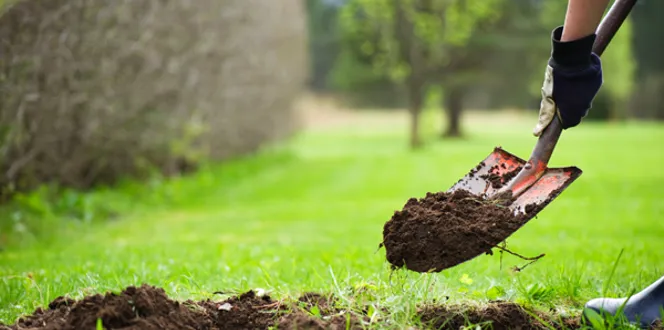Take a close look at your trees.
Do they look happy? The trunk probably looks relatively strong and free of obvious damage. Leaves might even look fairly full and lush.
Now, take a really good look and ask yourself: "If something was wrong with my trees deep down, would I be able to tell minus the obvious signs?"
You might have to conduct a "deeper" investigation into their condition if you will. Are your trees screaming for a little "air?" Can you guess the "root" of their problem?
If you haven't figured it out yet, these puns refer to one of the biggest problems of tree installation: planting trees too deeply. About 80 percent of all tree problems can be attributed to their soil environment.
Problems With Trees Planted Too Deep And Solutions To Fix
Planting a tree is a relatively quick and simple process. But how much effort you put into it can have a lifelong effect. Mistakes can cause a tree to fail very quickly, limiting its lifespan. Shortcutting the planting process can cause the tree to struggle for many years, never achieving its full potential benefits in the landscape. And all the while, you are unaware that your tree is crying out for help.
Planting a tree right in the first place is the goal. Paying attention to the details in this process can mean a healthier, more vigorous, and successful tree that will add multiple and growing benefits to your landscape for years to come.
The mistake of planting a tree too deeply isn't always readily apparent at the time of installation, but the long-term effects of it are substantial. When buried too deeply, tree stems and roots decline in health and condition. And poor tree stems and roots mean reduced tree growth and leaf size and color, decreased cold hardiness, and increased disease and insect susceptibility. Sometimes trees show these problems right away in the first year after planting, but usually, the problem emerges after a few years when it becomes more challenging to fix.
How Deep Should Trees Be Planted?
To understand how to plant trees right, one has to understand their roots. For tree roots to grow vigorously, they require water and oxygen. As a result, most roots grow shallowly in the soil. When roots are buried too deeply, less oxygen is available.
Ideally, plant trees so their root flare (where the trunk starts to bulge out at the bottom) is slightly above the soil surface.
To dig a hole that is the right depth for your tree, measure from the bottom of the root ball to the beginning of the tree’s root flare. Now, dig a hole that deep and situate the root flare at the right level. Want to see step-by-step what this process looks like?
Watch the video below on how to dig a deep enough hole
Symptoms Of Trees Planted Too Deep – And How To Fix A Tree Planted Too Deep Or Too Low
To spot a poorly planted tree, look for a trunk that is going straight into the ground like a pole. Signs of trees suffering as a result of deep planting include girdling roots, few or no buttress roots showing; yellowing, undersized or fewer leaves; and stunted height.
You may be able to remedy buried trees by replanting them at the proper height or removing excess soil from the tree's root flare. Replanting is more successful on trees planted in the past two to three months, while removal of excess soil via a process called root collar excavation that uses compressed air to prevent tree injury is better for established plants.





